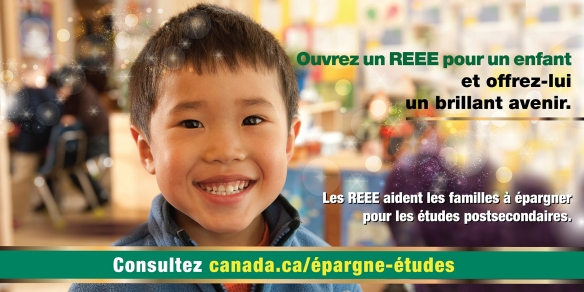Le 18 mars 2019, le gouvernement a présenté son budget, intitulé Investir dans la classe moyenne. La Fédération canadienne des enseignantes et des enseignants (FCE-CTF) a examiné celui-ci pour évaluer la mesure dans laquelle les allocations et les initiatives prévues répondent aux dossiers d’action politique prioritaires des plus de 273 000 enseignantes et enseignants des écoles publiques que la FCE-CTF représente aux quatre coins du Canada.
Afin de répondre aux besoins et aux priorités du personnel enseignant, des près de cinq millions d’élèves des écoles publiques, de la maternelle à la 12e année, et d’un système d’éducation publique de qualité, inclusive et financée par l’État, la FCE-CTF est déterminée à mener des actions pour améliorer les choses dans un grand nombre de dossiers prioritaires soutenus par trois piliers :
- renforcer les droits des travailleuses et travailleurs, et promouvoir le renouvellement syndical en tant que fondement de la démocratie;
- veiller à ce que l’éducation publique dispose de ressources et d’un financement adéquats;
- demeurer inébranlables dans nos efforts pour faire progresser la justice sociale.
Le budget fédéral de 2019 contient un mélange de promesses de programmes importantes ainsi que des mesures modestes, mais progressistes, qui répondent à bon nombre des dossiers d’action politique prioritaires de la FCE-CTF. Dans cet article, nous mettons en évidence les mesures budgétaires qui concernent particulièrement les piliers prioritaires dont il est question plus haut. Vous trouverez ci-dessous dix choses que vous devez savoir au sujet du budget fédéral de 2019 par rapport aux priorités de 273 000 enseignantes et enseignants qui ne ménagent pas leurs efforts pour les enfants du Canada et l’avenir de notre pays.
Les droits des travailleuses et travailleurs, et le renouvellement syndical en tant que fondement de la démocratie
- Nouvelles mesures proposées pour soutenir les travailleuses et travailleurs qui désirent suivre une formation axée sur les compétences. Ces mesures comprennent l’Allocation canadienne pour la formation, le crédit canadien pour la formation et la prestation de soutien à la formation de l’assurance-emploi. L’Allocation canadienne pour la formation a pour but d’aider les travailleuses et travailleurs canadiens à payer les frais de formation; chaque année, « les travailleurs admissibles âgés de 25 ans à 64 ans accumuleraient un solde de crédit à un taux de 250 $ par année, jusqu’à un plafond total à vie de 5 000 $ » qu’ils pourraient utiliser pour payer les frais de formation (p. 44). Pour les besoins de ce nouveau crédit, le budget de 2019 propose d’investir « 710 millions de dollars sur cinq ans, à compter de 2019-2020, et 265 millions par année par la suite » (p. 45). La prestation de soutien à la formation de l’assurance-emploi (qui devrait être lancée à la fin de 2020) « serait offerte dans le cadre du programme d’assurance-emploi et verserait jusqu’à quatre semaines de soutien du revenu aux quatre ans » (p. 45). Ce soutien du revenu serait « versé à 55 % de la rémunération hebdomadaire moyenne d’une personne » et aurait pour but d’aider les travailleuses et travailleurs à payer leurs dépenses « pendant qu’ils suivent une formation et qu’ils ne touchent pas leur chèque de paie régulier » (p. 45). Cette prestation coûtera « 1,04 milliard de dollars sur cinq ans, à compter de 2019-2020, et 321,5 millions par année par la suite » (p. 46). Ces mesures sont prometteuses, mais, comme le dit Katherine Scott, chercheuse principale au CCPA, [traduction libre] « les employeurs brillent par leur absence dans ce budget et, même s’ils investissent chroniquement peu dans la formation en cours d’emploi, ils seront les plus grands bénéficiaires du fait qu’ils obtiendront des travailleuses et travailleurs mieux formés ».
- Mesures législatives visant à inscrire de façon proactive les cotisants et cotisantes au Régime de pensions du Canada (RPC). En vertu de ces mesures, « les cotisants qui seront âgés de 70 ans ou plus en 2020, mais qui n’ont pas encore demandé à recevoir leurs prestations de retraite » (p. 78) seraient inscrits de façon proactive au RPC. Par conséquent, environ 40 000 personnes âgées de 70 ans ou plus qui ne sont pas encore inscrites au RPC commenceraient à recevoir une pension de retraite mensuelle moyenne de 302 $. Ces mesures coûteraient 9,6 millions de dollars qui « proviendraient du Compte du Régime de pensions du Canada » (p. 79). Il s’agit d’une mesure qui permettra de veiller à ce que tous les cotisants et cotisantes au RPC reçoivent les prestations auxquelles ils sont admissibles.
- Prolongation du congé parental. Le budget de 2019 propose « d’étendre la période visée par le congé parental, passant de 6 mois à 12 mois dans le cas des étudiants et des boursiers postdoctoraux qui reçoivent un financement d’un conseil subventionnaire » en fournissant « un total de 37,4 millions de dollars sur cinq ans, à compter de 2019-2020, et 8,6 millions par année par la suite, aux conseils subventionnaires fédéraux » (p. 55). Le budget indique que cet investissement « sera utile aux jeunes chercheurs, surtout aux femmes » et 2 « aidera en outre les parents à mieux concilier leurs obligations professionnelles et leurs responsabilités familiales, comme la garde d’enfants » (p. 55); cependant, la question d’un système national de services de garde d’enfants abordables pour les travailleuses et travailleurs canadiens reste largement sans réponse.
Des ressources adéquates pour l’éducation publique
- Une gamme d’initiatives ou de services pertinents. Bien que l’éducation relève de la compétence des provinces et des territoires1 , le gouvernement fédéral conserve un important pouvoir de dépenser dans des programmes et initiatives qui soutiennent l’éducation publique. Ce budget contient une gamme de services ou initiatives qui touchent des questions comme la formation, l’égalité des sexes, l’éducation postsecondaire, l’éducation autochtone, les programmes alimentaires et l’enseignement des sciences, de la technologie, de l’ingénierie et des mathématiques (STIM), et qui contribuent à répondre aux besoins d’un système d’éducation publique solide, financé par l’État, et à réduire les écarts socioéconomiques et les inégalités. Le budget de 2019 propose de réduire le taux d’intérêt flottant — applicable aux prêts d’études canadiens et aux prêts canadiens aux apprentis — au taux préférentiel, de son taux actuel du taux préférentiel majoré de 2,5 points de pourcentage, à compter de 2019-2020. Le budget de 2019 propose également de réduire le taux fixe au taux préférentiel majoré de 2,0 points de pourcentage, de son taux actuel du taux préférentiel majoré de 5,0 points de pourcentage, à compter de 2019-2020. Un grand nombre d’étudiantes et étudiants, de membres du corps enseignant et de familles doivent composer avec des prêts d’études élevés. Cette mesure, en plus d’apporter un soulagement aux emprunteurs, pourrait avoir un effet incitatif auprès des étudiantes et étudiants. L’éducation publique est confrontée à une crise au chapitre du recrutement et du maintien en poste d’enseignantes et enseignants qualifiés, une crise qui va en s’aggravant, et les mesures qui procurent un soulagement aux membres du personnel enseignant et un soutien aux étudiantes et étudiantes qui suivent un programme de formation initiale à l’enseignement en vue d’obtenir leur qualification sont les bienvenues.
Justice sociale
- Réduction de la pauvreté. Le budget contient de nombreuses mesures qui concernent la stratégie de réduction de la pauvreté du gouvernement, par exemple améliorer l’exemption sur le revenu du Supplément de revenu garanti, inscrire de façon proactive au Régime de pensions du Canada les aînées et aînés qui ont 70 ans et plus en 2020, mettre en œuvre le principe de Jordan et fournir les fonds nécessaires à cette mise en œuvre, et financer des projets et des programmes destinés aux aînées et aînés, aux Autochtones du Canada et aux personnes réfugiées. Le budget contient également de nouvelles mesures concernant le logement, dont l’Incitatif pour acheteurs d’une première habitation, dans le cadre duquel la Société canadienne d’hypothèques et de logement fournira jusqu’à 1,25 milliard de dollars sur trois ans, à compter de 2019-2020, aux acheteurs d’une habitation admissibles en partageant le coût d’une hypothèque. Ces mesures, quoique bienvenues, sont assez modestes et répondent principalement aux besoins d’accession à la propriété de la classe moyenne. Elles passent à côté de l’occasion d’investir dans le logement sécuritaire et abordable et de répondre ainsi aux besoins des personnes qui vivent dans la pauvreté. Il y a aussi une absence flagrante de nouveaux investissements dans l’apprentissage et la garde des jeunes enfants.
- Égalité des sexes. Le budget fédéral de 2018, surnommé le « budget de l’égalité des sexes », avait présenté un nouveau Cadre des résultats relatifs aux genres, et augmenté le financement et la portée de l’analyse comparative entre les sexes plus (ACS+) pour évaluer les questions de recoupement en rapport avec l’élaboration des politiques et des programmes. Le budget fédéral de 2019 prévoit un autre « financement historique » pour faire progresser l’égalité des sexes. Il fournit ainsi 160 millions de dollars au Programme de promotion de la femme entre 2019 et 2024 (p. 203). Bien que l’augmentation du financement destiné à l’égalité des sexes constitue un pas dans la bonne direction, la Fondation canadienne des femmes (article en anglais seulement) signale que le budget ne contient pas de mesures nationales concernant la loi sur l’équité salariale et le financement de la garde d’enfants, deux piliers d’une société qui valorise l’égalité des sexes.
- Égalité des sexes, éducation et perfectionnement des compétences. Le Cadre des résultats relatifs aux genres englobe six domaines clés, dont le premier concerne l’éducation et le perfectionnement des compétences. L’objectif intitulé « Chances égales et cheminements diversifiés en matière d’éducation et de perfectionnement des compétences » englobe d’autres objectifs comme l’augmentation du nombre de femmes dans les domaines d’études non traditionnels comme les sciences, la technologie, l’ingénierie et les 1 Loi constitutionnelle de 1867 du Canada, article 93 3 mathématiques (STIM) (p. 256-258). Parmi les mesures récentes figure CodeCan, un programme de 50 millions de dollars qui a pour but d’« enseigner le codage et [de] donner des compétences numériques aux élèves et enseignants de la maternelle à la 12e année ». Ce programme s’adresse plus particulièrement aux filles et aux élèves sous-représentés dans les domaines des STIM (p. 260). Introduire le codage dans les écoles par l’intermédiaire du personnel enseignant et des élèves permettrait de rejoindre des jeunes qui autrement n’auraient peut-être pas la possibilité d’acquérir ces compétences.
- Santé mentale. Dans son budget de 2017, le gouvernement fédéral s’était engagé à verser 11 milliards de dollars sur dix ans pour des initiatives touchant la santé mentale et les soins à domicile. Contrairement à cette stratégie plus groupée, dans son budget de 2019, il répartit plutôt les fonds destinés à la santé mentale entre de multiples priorités, mais surtout les initiatives ciblant les personnes les plus vulnérables du Canada, comme les personnes inuites, les Autochtones, les personnes allosexuelles, les personnes de race noire, les personnes aînées et les anciennes et anciens combattants. Le financement couvre, entre autres, l’accès à des services de santé mentale pour les jeunes de race noire (p. 205) et la construction de centres de guérison pour la population inuite et les autres résidentes et résidents du Nunavut (p. 121). La nouveauté en 2019 est la stratégie assortie de 25 millions de dollars pour créer un service pancanadien de prévention du suicide qui inclura l’offre de soutien en cas de crise de santé mentale. Ce service permettra l’accès dans les deux langues officielles, 24 heures sur 24 et 7 jours sur 7, à des intervenantes et intervenants formés pour gérer ces crises.
- Changements climatiques. Le budget de 2019 contient de multiples mesures qui font de l’action contre les changements climatiques une priorité. Il propose notamment d’affecter 350 millions de dollars à la Collaboration sur l’action communautaire en matière de lutte contre les changements climatiques. Ce financement couvrira entre autres les initiatives de la Fédération canadienne des municipalités et de Low Carbon Cities Canada qui créeront un réseau pancanadien pour appuyer les actions des communautés locales visant à réduire les gaz à effet de serre. Le budget de 2019 s’attaque aussi aux changements climatiques en proposant plusieurs investissements afin d’assurer un soutien continu aux régions de l’Arctique et du Nord canadiens et d’aider les communautés des Premières Nations à mieux se préparer pour faire face aux situations d’urgence et aux menaces découlant des changements climatiques. En outre, le gouvernement propose de présenter un projet de loi qui permettra l’affectation directe des produits de la redevance réglementaire sur les combustibles fossiles aux secteurs susceptibles d’être particulièrement touchés par la tarification de la pollution par le carbone.
- Éducation autochtone. Le budget fédéral de 2019 comprend d’importantes mesures pour appuyer l’éducation autochtone et renforcer les soutiens et les services aux Autochtones. Le chef national de l’Assemblée des Premières Nations (APN), Perry Bellegarde, note que le budget annonce des investissements importants et soutenus pour favoriser la réussite des enfants des Premières Nations et appuyer les gouvernements de ces nations. Selon l’APN, 24 mesures ciblent particulièrement les Autochtones, pour un total d’environ 4,7 milliards de dollars répartis entre un éventail d’initiatives qui couvrent les langues, l’éducation, y compris l’éducation postsecondaire, la participation à l’économie, la gestion des urgences, la mise en œuvre des appels à l’action de la Commission de vérité et réconciliation, l’eau, la santé et le bien-être. L’Inuit Tapiriit Kanatami (ITK) accueille aussi avec satisfaction les investissements annoncés dans le budget de 2019 qui ciblent les Inuits et, plus précisément, la prévention du suicide, l’éducation postsecondaire et les services de santé et les services sociaux pour les enfants inuits. Cependant, l’ITK indique aussi que, malgré la proposition d’un transfert ponctuel de 2,2 milliards de dollars au titre des investissements dans l’infrastructure des communautés par l’intermédiaire du Fonds fédéral de la taxe sur l’essence, l’organisation est très déçue du fait que les Inuites et Inuits continuent d’être exclus des investissements dans les infrastructures et des décisions concernant leurs territoires2 .
Le budget de 2019 envoie des messages prometteurs et propose de nouvelles mesures progressistes, signe que le gouvernement prend au sérieux son obligation de répondre aux besoins et aux priorités des Canadiennes et des Canadiens. Par contre, il a raté sa chance d’augmenter ses investissements et d’adopter des stratégies plus audacieuses dans les dossiers de la lutte contre la pauvreté, de l’équité entre les sexes, de la maladie mentale, de la garde des jeunes enfants et des droits des travailleuses et travailleurs. La FCE-CTF poursuivra son action politique pour répondre aux besoins et aux priorités de l’éducation publique financée par l’État, des enseignantes et enseignants, et des élèves de l’ensemble du pays.
2 https://www.itk.ca/inuit-tapiriit-kanatami-reacts-to-inuit-specific-investments-in-2019-budget/ (en anglais seulement).





